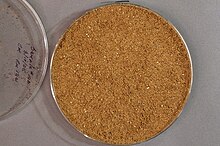
Meat and bone meal (MBM) is a product derived from the rendering process of animal carcasses, typically from livestock and poultry. It is produced by grinding and cooking the animal by-products, including bones, meat trimmings, and other tissues, to remove moisture and fat. The resulting meal is then dried and ground into a fine powder or granules. Here’s an overview of meat and bone meal:
-
Composition: Meat and bone meal is a protein-rich product that contains a combination of meat, bone, and other animal tissues. Its exact composition can vary depending on the rendering process and the source of the materials. Generally, it has a high protein content, typically ranging from 40% to 50%. It also contains significant amounts of minerals such as calcium, phosphorus, and trace elements.
-
Uses in Animal Feed: Meat and bone meal has historically been used as an ingredient in animal feed, particularly for non-ruminant animals such as poultry, pigs, and pets. It serves as a source of protein, essential amino acids, minerals, and other nutrients. However, the use of meat and bone meal in animal feed has been restricted or banned in several countries due to concerns about the transmission of diseases like BSE (bovine spongiform encephalopathy).
-
Feed Safety Regulations: In response to the BSE crisis, many countries implemented regulations and restrictions on the use of meat and bone meal in animal feed. These regulations aim to prevent the spread of diseases and ensure the safety of animal-derived products. The use of specific risk materials, including certain tissues from ruminant animals, in the production of meat and bone meal is strictly regulated.
-
Alternative Uses: While the use of meat and bone meal in animal feed has decreased in some regions, it may still be used in certain situations where strict regulations are in place to ensure safety. Additionally, meat and bone meal that meets specific quality and safety standards can be used as a source of nutrients in organic fertilizers and soil amendments for gardening and agriculture.
-
Safety and Contamination Concerns: The production and use of meat and bone meal must adhere to stringent quality control measures to ensure the absence of contaminants, pathogens, and harmful substances. Proper rendering processes, including heat treatment, are crucial for eliminating the risk of disease transmission. It is essential to source meat and bone meal from reliable and approved suppliers to ensure safety.
-
Environmental Considerations: The disposal of animal by-products, including bones and meat scraps, through rendering and production of meat and bone meal contributes to waste management and environmental sustainability. The rendering process helps reduce waste by converting animal by-products into a useful product, which can be further utilized in various applications.
It’s important to note that the regulations and practices regarding meat and bone meal may vary across countries and regions. Local regulations, guidelines, and expert advice should always be followed to ensure compliance and safety when using meat and bone meal or any other animal-derived products.
